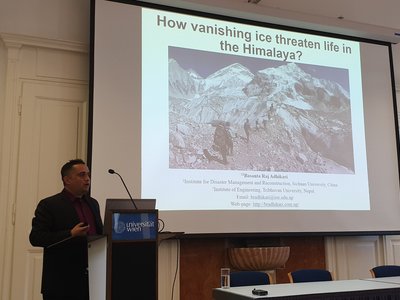

The workshop was mainly focused on how the vanishing of the cryosphere and its environmental changes impact the thoughts, emotions and actions of people who experience changing ice-caps daily. More than 50 scholars from the natural sciences, humanities and social sciences participated and discussed to foster an interdisciplinary exchange about the power of “vanishing ice” within the context of ongoing debates about the human-environmental interactions in the Anthropocene.
Dr. Adhikari shared his experience about how the vanishing ice threaten life in the Himalaya. His talk was mainly focused on the status of snow and glaciers in the Himalayas in the changing climate. Increasing numbers of glacial lakes are a major threat to the people living downstream. Some villages in the Himalayas have already migrated to other places due to unavailability of fresh water. The economy of Nepal is depending upon tourism which is also affected by this vanishing ice and therefore the livelihood of the people is also affected.
Fruther information about the Anthropocene network and program can be accessed here.
